Related Research Articles

Chocolate, or cocoa, is a food made from roasted and ground cacao seed kernels that is available as a liquid, solid, or paste, either on its own or as a flavoring agent in other foods. Cacao has been consumed in some form for at least 5,300 years starting with the Mayo-Chinchipe culture in what is present-day Ecuador. Later Mesoamerican civilizations also consumed chocolate beverages before being introduced to Europe in the 16th century.

Cadbury, formerly Cadbury's and Cadbury Schweppes, is a British multinational confectionery company owned by Mondelez International since 2010. It is the second-largest confectionery brand in the world, after Mars. Cadbury is internationally headquartered in Greater London, and operates in more than 50 countries worldwide. It is known for its Dairy Milk chocolate, the Creme Egg and Roses selection box, and many other confectionery products. One of the best-known British brands, in 2013 The Daily Telegraph named Cadbury among Britain's most successful exports.
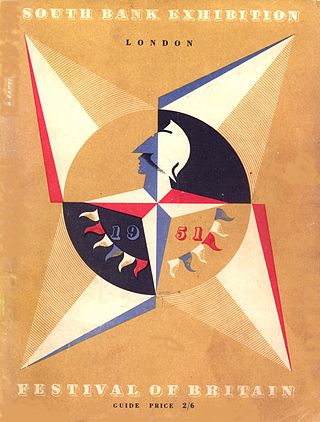
The Festival of Britain was a national exhibition and fair that reached millions of visitors throughout the United Kingdom in the summer of 1951.

A chocolate bar is a confection containing chocolate, which may also contain layerings or mixtures that include nuts, fruit, caramel, nougat, and wafers. A flat, easily breakable, chocolate bar is also called a tablet. In some varieties of English and food labeling standards, the term chocolate bar is reserved for bars of solid chocolate, with candy bar used for products with additional ingredients.

The Great Exhibition of the Works of Industry of All Nations, also known as the Great Exhibition or the Crystal Palace Exhibition, was an international exhibition that took place in Hyde Park, London, from 1 May to 15 October 1851. It was the first in a series of World's Fairs, exhibitions of culture and industry that became popular in the 19th century. The event was organised by Henry Cole and Prince Albert, husband of Victoria, Queen of the United Kingdom.

The International Exhibition of 1862, officially the London International Exhibition of Industry and Art, also known as the Great London Exposition, was a world's fair held from 1 May to 1 November 1862 in South Kensington, London, England. The site now houses museums including the Natural History Museum and the Science Museum.

John Cadbury was an English Quaker and proprietor, tea and coffee trader and founder of Cadbury, the chocolate business based in Birmingham, England.

George Cadbury was an English Quaker businessman and social reformer who expanded his father's Cadbury's cocoa and chocolate company in Britain.

White chocolate is a confectionery typically made of sugar, milk, and cocoa butter, but no cocoa solids. It is pale ivory in color, and lacks many of the compounds found in milk, dark, and other chocolates. It is solid at room temperature because the melting point of cocoa butter, the only white cocoa bean component, is 35 °C (95 °F).
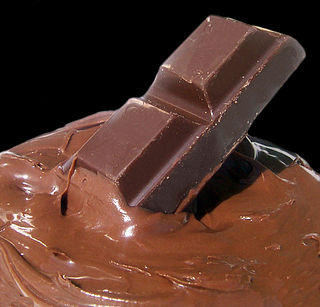
The color chocolate or cocoa brown is a shade of brown that resembles chocolate. At right is displayed the color traditionally called chocolate.

Abraham Follett Osler, known as A. Follett Osler, was a pioneer in the measurement of meteorological and chronological data in Birmingham, England.

Chocolate is a food product made from roasted and ground cocoa pods mixed with fat and powdered sugar to produce a solid confectionery. There are several types of chocolate, classified primarily according to the proportion of cocoa and fat content used in a particular formulation.

Henry Lillie Pierce was a United States representative from Massachusetts. He was born in Stoughton. He attended the State normal school at Bridgewater, and was engaged in manufacturing. He served as mayor of Boston and as a Republican in the Forty-third and Forty-fourth Congresses of the United States. He declined to be a candidate for renomination, was elected again as mayor of Boston in 1877, and died in that city on December 17, 1896. His interment was in Dorchester South Burying Ground.
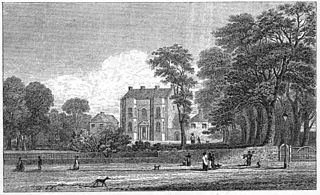
Bingley Hall in Birmingham was the first purpose-built exhibition hall in Great Britain. It was built in 1850 and burned down in 1984. The International Convention Centre now stands on the site.
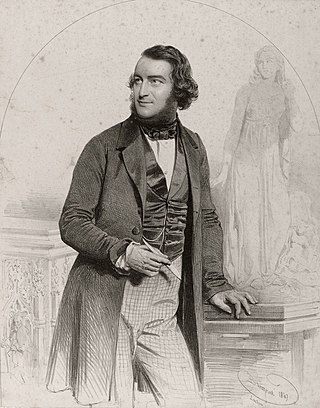
John Thomas (1813–1862) was a British sculptor and architect, who worked on Buckingham Palace and the Palace of Westminster.

George Wallis (1811–1891) was an artist, museum curator and art educator. He was the first Keeper of Fine Art Collection at South Kensington Museum in London.
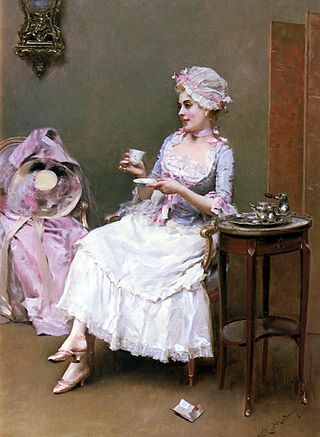
The history of chocolate in Spain is part of the culinary history of Spain since the 16th century, when the colonisation of the Americas began and the cocoa plant was discovered in regions of Mesoamerica, until the present. After the conquest of the Aztec Empire, cocoa as a commodity travelled by boat from the port of New Spain to the Spanish coast. The first such voyage to Europe occurred at an unknown date in the 1520s. But it was only in the 17th century that regular trade began from the port of Veracruz, opening a maritime trade route that would supply the new demand from Spain, and later from other European countries.
Francis Whishaw was an English civil engineer. He was known for his role in the Society of Arts, and as a writer on railways. Later in life he was a promoter of telegraph companies.

Henry Blunt was born in Southwark. He moved to Shrewsbury, Shropshire c. 1809 as a small child with his father, chemist Robert Blunt, mother Ann (Porter) Blunt and older brother, Thomas. The brothers later joined their father as Chemists and Druggists, as "Blunt and Sons" eventually adding a soda water manufactory, and later adding ginger beer. in the now sectioned 23 and 23a Wyle Cop address.
Chocolat Kohler was a chocolate producer based in Lausanne, founded in 1830 by the Kohler brothers. It is currently a brand owned by Nestlé.
References
- ↑ "Industrial Exhibitions" . Retrieved 13 May 2021.
- 1 2 3 4 5 6 7 8 9 Prinsen, Jo, PRECURSOR OF THE GREAT EXHIBITION BIRMINGHAM'S EXPOSITION IN 1849
- ↑ "History West Midlands | Precursor to The Great Exhibition" . Retrieved 12 May 2021.
- ↑ "Wilkinson - Osler & Faraday" . Retrieved 13 May 2021.